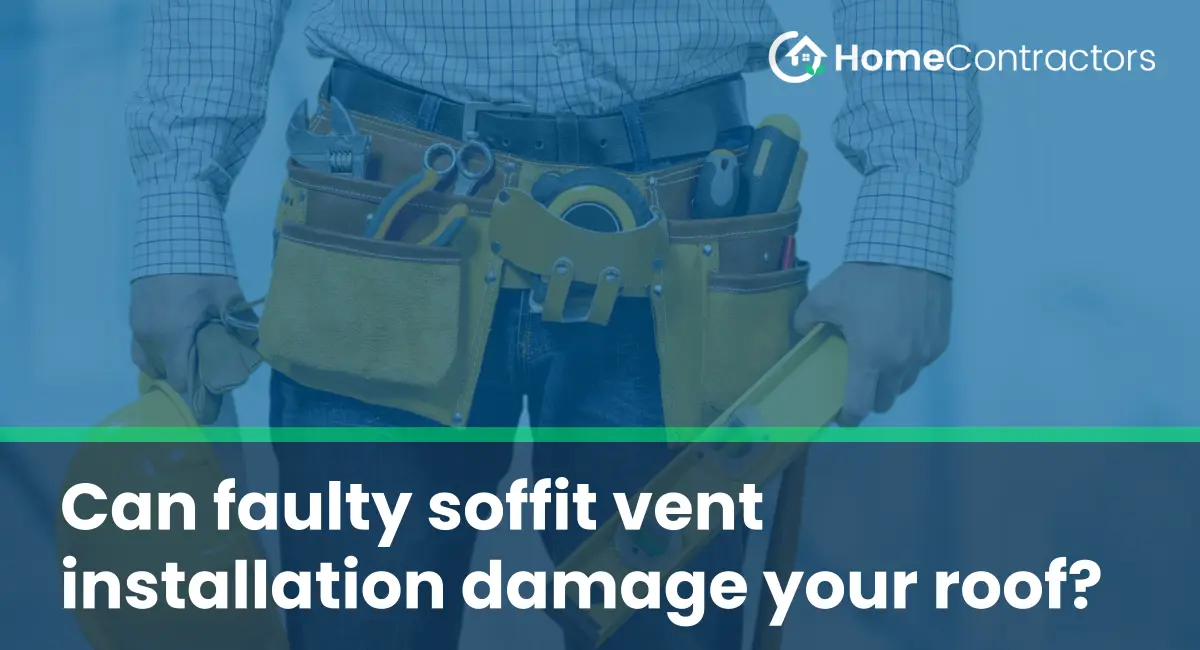Soffit vents play a crucial role in maintaining the overall health and longevity of your roof. These vents are responsible for facilitating proper air circulation and preventing moisture buildup in the attic, which can lead to various roof problems. However, a faulty soffit vent installation can jeopardize the integrity of your roof and cause significant damage if left unresolved.
The Importance of Soffit Vents:
Soffit vents are located in the soffit area, which is the underside of the roof overhang. They work hand in hand with other roofing components, such as ridge vents and attic fans, to ensure proper airflow in the attic space. By allowing cool air to enter through the soffit vents and warm air to exit through the ridge vents, homeowners can create a well-ventilated attic environment that prevents heat and moisture buildup. This is essential to avoid a range of issues, including roof damage, mold growth, and even compromised structural integrity.
Signs of Faulty Soffit Vent Installation:
While the purpose of soffit vents is relatively straightforward, their installation requires precision and attention to detail. Unfortunately, improper installation or faulty vent covers can lead to several problems. Here are some signs that you may have a faulty soffit vent installation:
1. Inadequate Air Circulation:
If you notice that your attic feels stuffy, humid, or unusually warm, it may indicate an issue with your soffit vents. Poor air circulation due to blockages, improper vent sizing, or incorrect placement can disrupt the natural air escape route, leading to attic ventilation problems.
2. Moisture Problems:
One of the primary roles of soffit vents is to prevent moisture buildup in the attic. However, if you notice signs of excess moisture, such as water stains, musty odors, or even mold growth, it could be an indication that your soffit vents are not functioning correctly. Moisture-related issues can weaken your roof structure and compromise its integrity, leading to costly repairs.
3. Pest Infestations:
Improperly installed soffit vents can create small openings or gaps that rodents, insects, and other pests can exploit to gain access to your attic. Not only can these pests cause damage to your belongings, but they can also wreak havoc on your roof by chewing through insulation, wiring, and even structural components.
4. Ice Dams:
In colder climates, ice dams can form on the edges of roofs during winter. These ice formations occur when warm air from the attic melts snow, which then refreezes at the roof’s cooler eaves. Faulty soffit vent installations can contribute to ice dams by allowing warm air to bypass the designated route, resulting in uneven roof temperatures and ice buildup.
The Impact of Faulty Soffit Vent Installation on Roof Health:
When soffit vents fail to function properly, the consequences can be severe. Improper airflow and ventilation can cause several roof-related issues, including:
1. Roof Leaks:
Inadequate ventilation due to faulty soffit vent installation can lead to moisture accumulation in the attic. Over time, this excess moisture can seep into the roof structure, causing leaks. Ignoring these leaks can lead to water damage, rot, and the need for extensive roof repairs or even replacement.
2. Shingle Damage:
Without adequate ventilation, roofs can become excessively hot, especially during the summer months. This heat buildup can accelerate the degradation of asphalt shingles and other roofing materials. Over time, this can lead to curling, cracking, blistering, or premature deterioration of the roof covering.
3. Decreased Energy Efficiency:
Proper attic ventilation helps regulate the temperature in your home, leading to increased energy efficiency. Inadequate ventilation due to faulty soffit vent installation can cause your HVAC system to work harder to maintain a comfortable temperature, resulting in higher energy bills.
Faulty soffit vent installation can undoubtedly damage your roof and lead to various problems. It is essential to address any signs of improper installation promptly. By ensuring proper airflow and ventilation in your attic, you can help protect your roof, extend its lifespan, and avoid costly repairs down the line. If you suspect issues with your soffit vents, consult a professional roofing contractor to assess the situation and provide necessary repairs or adjustments.
